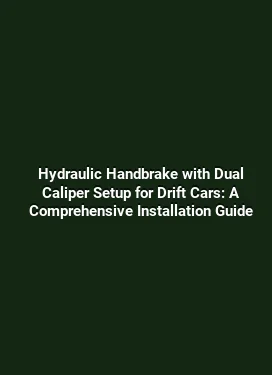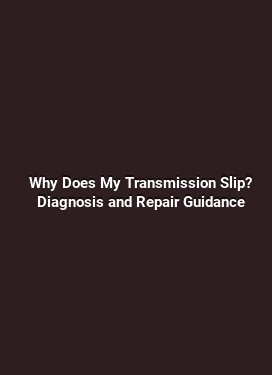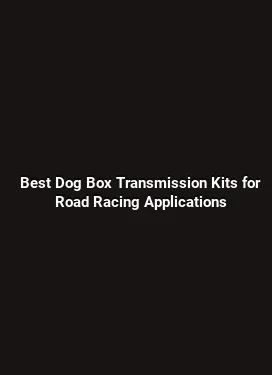Choosing Gear Ratios: Final Drive Selection for Optimal Speed
Understanding Gear Ratios and Final Drive

Gear ratios are the mathematical relationships that govern how engine rotation translates into wheel speed. In a typical setup, the transmission provides a range of selectable ratios, while the final drive (often part of the differential) translates the transmission output into wheel torque. The interplay between these components determines the overall gearing of the vehicle, shaping acceleration, top speed, fuel economy, and drivability across a spectrum of conditions. A well-chosen final drive ratio can unlock higher sustained speeds in highway cruising while maintaining adequate response at launch and in mid-range performance scenarios.
From a drivetrain perspective, the final drive acts as the last stage of torque multiplication before the wheels. It must balance competing objectives: maximizing top speed with efficient energy transfer, while preserving reasonable acceleration and avoiding excessive engine stress. Modern applications frequently employ electronic aids and variable or multi-axle configurations, but the core principles of ratio choice remain grounded in fundamental dynamics: torque, inertia, and resistance at the wheel.
How final drive interacts with transmission choices

The transmission offers discrete gearings, each with a designated ratio. When you pair a transmission with a final drive, the overall reduction from engine crank to wheel is the product of the two stages. A lower final drive ratio (numerically smaller) reduces wheel torque but enables higher wheel speed for a given engine RPM, improving top speed and highway efficiency. Conversely, a taller final drive (numerically higher) multiplies torque more aggressively, enhancing launch feel and off-crest performance but typically capping top speed and increasing engine RPM at highway velocity.
Understanding this interaction helps in selecting a final drive that aligns with the vehicle’s mission. For a sports car focused on corner speed and responsive acceleration, a balanced approach between transmission gearing and final drive keeps the engine near its optimal power band across common operating speeds. For an economy-focused setup with long highway drives, a lower final drive ratio can contribute to improved fuel efficiency and reduced engine load in cruise.
The Relationship Between Torque, RPM, and Speed
The relationship between torque, engine RPM, and wheel speed forms the backbone of gearing decisions. Engine torque curves typically peak at a particular RPM range. Placing the overall gearing so that the engine spends more time within or near this peak during typical driving scenarios yields stronger acceleration and smoother performance. The final drive ratio shifts the point where engine RPM corresponds to wheel speed at any given vehicle speed. A higher final drive ratio raises engine RPM for a given speed, which can shorten the engine’s response window if the engine does not deliver sufficient torque at elevated RPM.
Wheel torque is a function of engine torque, transmission ratio, final drive ratio, and drivetrain losses. While drivetrain losses are nontrivial, the conceptual model remains: increasing the final drive ratio increases wheel torque at a given engine RPM, but reduces top speed due to higher RPM requirements at highway velocities. To optimize speed, one should aim for a gear spread that keeps the engine within the efficient zone while preserving adequate top-end capability. This often requires simulating real-world drive cycles and considering tire radius, as changes in wheel diameter alter the effective gearing without touching the mechanical ratios.
LSI concept: energy transfer efficiency and power band alignment
Within the broader scope of drivetrain design, energy transfer efficiency and power band alignment are critical. The goal is to minimize unnecessary engine RPM excursions while maintaining torque delivery at the wheels. When the final drive ratio is selected to improve top speed, it may be necessary to evaluate aerodynamic drag, rolling resistance, and tire compliance, as these factors increasingly influence real-world performance. By analyzing peak power delivery and the point of maximum usable torque, engineers can identify pointing strategies for gear selection that harmonize with the engine’s natural characteristics.
Practical Methods for Selecting Final Drive Ratios
Practical selection begins with clear performance targets. For example, a highway-focused vehicle might target a specific cruising RPM at a defined highway speed. A performance-oriented setup may aim for a shorter acceleration curve, maintaining the engine in a robust torque region during mid-range gears. The following methods provide actionable steps to determine a suitable final drive ratio.
1) Establish performance objectives: Define top speed, acceleration benchmarks, and engine RPM targets for critical road speeds. 2) Gather baseline data: Record current engine torque curve, redline RPM, and transmission gear ratios. 3) Model the gearbox-to-wheel relationship: Multiply the current transmission ratios by a range of final drive values to visualize pet charts showing wheel torque and vehicle speed at different engine RPMs. 4) Consider tire diameter: A larger diameter increases the effective gear ratio, lowering engine RPM for a given road speed, while a smaller diameter has the opposite effect. 5) Run on-road or dyno tests: Validate predictions by testing launches, mid-range accelerations, and sustained highway speeds to verify that the engine maintains efficiency without excessive RPM fluctuation.
Case study: balancing street usability with performance
Imagine a street-focused sports sedan with a broad torque curve. Starting with a mid-range final drive ratio, engineers may find that the car accelerates crisply from standstill but struggles to reach comfortable highway speeds without high engine RPM. By moving to a lower final drive ratio (numerically smaller), top speed increases and cruising RPM drops, improving fuel economy and reducing engine noise during highway cruising. Yet, if the ratio becomes too low, the engine may not reach its optimal torque window in common driving speeds, resulting in sluggish throttle response during overtaking or merging. The solution often lies in a balanced compromise: a final drive that keeps the engine within the optimal torque band across typical highway and city velocities, paired with well-tuned suspension and aero to maximize efficiency and stability at speed.
Vehicle Weight, Tire Size, and Drivetrain Losses
Weight plays a pivotal role in gearing decisions. Heavier vehicles demand more torque to achieve similar acceleration, particularly at launch and during heavy climbs. A higher final drive ratio can help mitigate this by increasing wheel torque, but the trade-off is higher engine RPM at speed. Tire size also influences the effective gearing. Larger tires increase the drive ratio, effectively reducing acceleration and increasing top speed in the same gear. Conversely, smaller tires improve acceleration but lower top speed. Drivetrain losses—friction in gears, bearings, and lubricants—reduce the net torque at the wheels, making it important to factor in real-world efficiency when selecting final drive ratios.
Engineering teams often simulate these effects using multi-parameter models that include weight distribution, aero drag, rolling resistance, and drive loss coefficients. In practical terms, this means measuring real-world performance with the chosen tire size and verifying that the engine remains within its sweet spot during typical driving scenarios. When planning upgrades or modifications, re-evaluating the final drive ratio in light of new weights or tires can prevent unexpected performance shortfalls.
Practical tips for weight and tire considerations
• If upgrading to larger wheels or wider tires, expect a shift in gearing. Recalculate final drive accordingly to preserve usable acceleration and reasonable cruising RPM. • When adding ballast or aftermarket components that increase vehicle weight, monitor changes in launch performance and mid-range responsiveness. • For race-inspired builds where grip is maximized, consider a slightly taller final drive to leverage traction control and maintain stable exit ramps from corners without over-revving the engine.
Case Studies: What-If Scenarios for Different Applications
Scenario A: A lightweight, high-tower roadster designed for track days but driven on public roads. The objective is rapid lap times with comfortable highway cruising. A mid-range final drive ratio paired with short-throw gears helps achieve aggressive acceleration while a lowered overall gearing keeps top speed within reasonable limits. Supplemental aerodynamic adjustments and proper gear synchronization ensure engine RPM remains within the optimal window across typical speeds.
Scenario B: A family sedan prioritizing fuel economy and comfort on long commutes. A taller final drive ratio reduces engine RPM at highway speed, lowers noise, and improves fuel economy, provided the engine maintains adequate torque for confident highway merging and overtaking. The transmission selection should complement this by offering smooth shifts and a modest torque multiplication in lower gears to sustain comfortable acceleration without excessive RPM spikes.
Real-world validation and data collection
Engineers commonly validate final drive selections with a combination of dyno testing, on-road data logging, and drive cycle simulations. Key metrics include time-to-velocity benchmarks, engine RPM at target speeds, and sustained torque delivery over standard road profiles. These data points help determine whether the chosen final drive fosters a favorable balance between acceleration, top speed, and fuel efficiency. In practice, this means iterative testing with different tire pressures, ambient temperatures, and fuel grades to ensure robustness of the final drive configuration across typical operating conditions.
Tools and Resources for Precision Gearing
Modern drag-and-drive enthusiasts and engineers rely on a mix of calculation tools, simulation software, and real-world testing protocols. Software that models torque curves, gear trains, and wheel dynamics allows for rapid iteration of final drive options. When choosing a tool, ensure it supports input of engine torque data, transmission ratios, tire dimensions, and drivetrain losses. Also consider tools that simulate aerodynamic drag at various speeds to understand how top speed targets interact with road resistance. A careful blend of theoretical modeling and empirical testing yields the most reliable final drive configuration for any given vehicle mission.
Best practices for iterative gearing optimization
Start with a clear performance brief, assemble accurate data for the baseline drivetrain, and progressively test alternate final drive ratios. Maintain consistent testing conditions to isolate the effect of gearing changes. Record engine speed ranges, acceleration times, and top speed brackets at standard road sections. Over time, build a library of ratio combinations linked with observable outcomes, enabling faster decision-making for future builds or modifications. This approach emphasizes continuous improvement, a cornerstone of high-performance drivetrain tuning.
Conclusion and Synthesis
Final drive selection is a central pillar of achieving optimal speed and balanced performance in any vehicle. The final drive works in concert with transmission gearing, engine torque characteristics, tire size, and vehicle weight to shape acceleration, cruising efficiency, and top-end capability. By following structured methods—establishing performance objectives, modeling gearing impacts, and validating with real-world data—engineers and enthusiasts can craft gearing solutions that maximize speed potential while preserving livability and efficiency. Embracing a holistic view that accounts for power delivery, inertia, and resistance fosters gear choices that are not only technically sound but also practically rewarding for daily driving and competitive applications alike.






